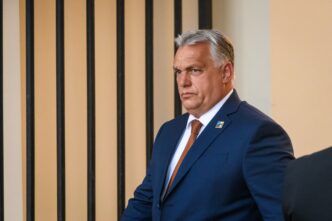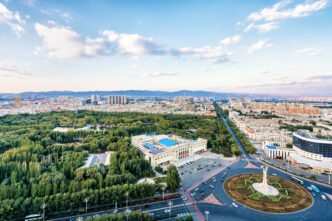Executive Summary
- President Trump significantly escalated the US military presence in the Caribbean by deploying the USS Gerald R. Ford aircraft carrier group to Latin America.
- This deployment is part of a broader military build-up, including eight additional warships, a nuclear submarine, and F-35 aircraft, aimed at disrupting illicit activities in the USSOUTHCOM Area of Responsibility.
- The substantial show of force comes amid heightened tensions with Venezuela and is expected to generate regional concern regarding the Trump administration’s intentions and approach to security.
The Story So Far
- The significant US military escalation in the Caribbean, involving the deployment of the USS Gerald R. Ford carrier group, is a direct response to long-standing US accusations that Venezuela harbors drug traffickers and undermines democratic institutions. This move reflects President Trump’s administration’s assertive stance against perceived threats in the Western Hemisphere, aiming to bolster capacity to detect, monitor, and disrupt illicit activities compromising US and regional security.
Why This Matters
- The deployment of the USS Gerald R. Ford aircraft carrier group significantly escalates the Trump administration’s military presence and pressure on Venezuela, marking a substantial shift in the US approach to regional security. This assertive show of force is expected to heighten tensions and generate concern across Latin America, potentially reshaping regional dynamics.
Who Thinks What?
- President Donald Trump and the US administration significantly escalated the US military presence in the Caribbean, deploying the USS Gerald R. Ford carrier group and other assets to bolster capacity to detect, monitor, and disrupt illicit actors and activities, particularly those attributed to Venezuela, which they accuse of harboring drug traffickers and undermining democratic institutions.
- The substantial military escalation is expected to generate concern across the region regarding the Trump administration’s intentions and its shift in approach to regional security.
US President Donald Trump significantly escalated the US military presence in the Caribbean on Friday, October 25, 2025, by deploying the USS Gerald R. Ford aircraft carrier group to Latin America. This substantial show of force, described as Washington’s most muscular move yet in the region, comes amid heightened tensions with Venezuela, a nation the US has long accused of harbouring drug traffickers and undermining democratic institutions.
Military Build-up Details
The deployment of the world’s largest aircraft carrier is part of a broader military build-up initiated by President Trump in the Caribbean. This initiative also includes eight additional warships, a nuclear submarine, and F-35 aircraft, a scale of deployment that surpasses previous counter-narcotics operations.
Pentagon spokesman Sean Parnell stated via social media that the enhanced US force presence in the USSOUTHCOM Area of Responsibility aims to bolster capacity to detect, monitor, and disrupt illicit actors and activities. These activities, he noted, compromise the safety and prosperity of the United States homeland and security in the Western Hemisphere.
Carrier Specifications and Location
The USS Gerald R. Ford, commissioned in 2017, is the newest and largest aircraft carrier in the US fleet, carrying over 5,000 sailors. While the exact arrival date of the carrier in the region was not specified by Parnell, the vessel was recently observed traveling via the Strait of Gibraltar in Europe.
Regional Implications
This substantial military escalation is expected to generate concern across the region regarding the Trump administration’s intentions. The move marks a significant shift in the US approach to regional security, particularly concerning Venezuela.
Strategic Context
The deployment of the Gerald Ford carrier group represents a notable escalation of US military posture in Latin America. It underscores the Trump administration’s assertive stance against perceived threats in the Western Hemisphere, particularly those attributed to Venezuela, and is likely to reshape regional dynamics.








